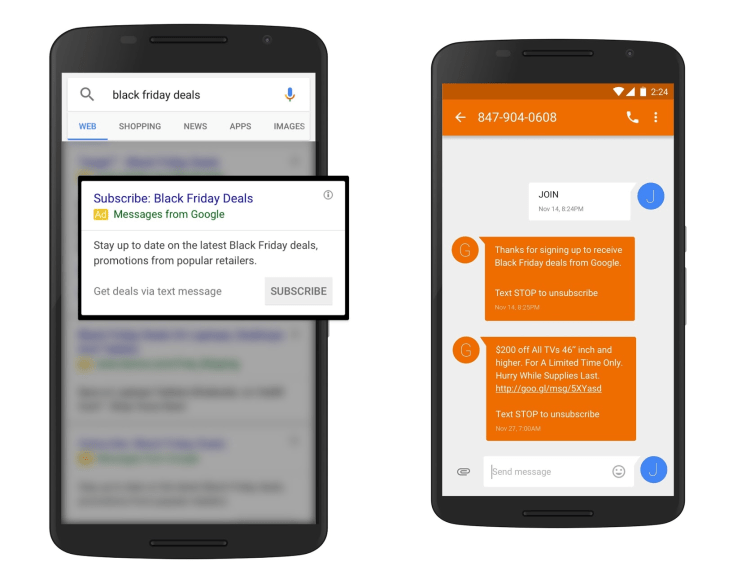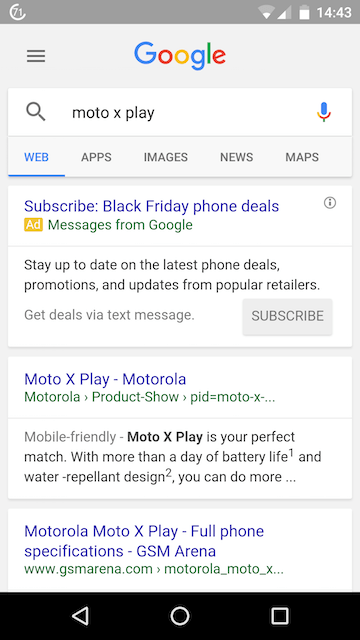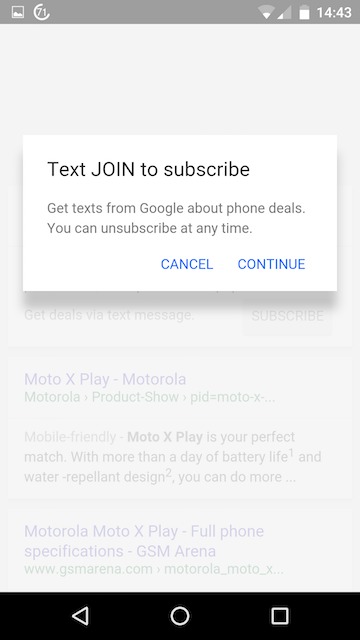Users will be able to text friends or a chatbot that will scour the Web and other sources to answer a question
Google is building a new mobile-messaging service that taps its artificial intelligence know-how and so-called chatbot technology to try to catch up with rivals includingFacebook Inc. in the fast-growing arena, according to people familiar with the matter.
Google’s new service may incorporate its chatbot technology. PHOTO: MARCIO JOSE SANCHEZ/ASSOCIATED PRESS
Messaging services are among the world’s most popular mobile apps, with more than two billion users, according to Portio Research Ltd. But Google’s two messaging services—Hangouts and Messenger—trail far behind Facebook’s WhatsApp and Messenger and Tencent Holdings Ltd.’s WeChat, the most popular messaging app in China. Some services are adding other capabilities—WeChat, for instance, lets users shop, pay bills and book appointments.
For its new service, Google, a unit of Alphabet Inc., plans to integrate chatbots, software programs that answer questions inside a messaging app, the people familiar with the matter said. Users will be able to text friends or a chatbot, which will scour the Web and other sources for information to answer a question, those people said. It is unclear when Google will launch the service, or what it will be called. Also in doubt is whether the new approach will be more successful than the company’s prior efforts. Users typically join messaging services because they know other users; Google has struggled to create such network effects with both Hangouts and Messenger.
A Google spokeswoman declined to comment.
Google veteran Nick Fox has been leading a team working on the new service for at least a year, according to people familiar with the matter. Tech news website The Information reported his new role as vice president of communications products earlier this year.
In October, Mr. Fox offered to buy 200 Labs Inc., a small startup that builds chatbots, but the firm declined the offer, according to two people familiar with the situation.
200 Labs developed a marketplace and rating service for chatbots on Telegram, a messaging app that offers hundreds of chatbots, devoted to subjects such as the weather, image search, news and dating. 200 Labs is working on technology that will choose the best chatbot to respond to a request.
Google is pursuing a similar goal with its messaging service, the people familiar with the plan said.
Instead of typing a query into Google’s search engine, users will send questions as text messages, to which chatbots will respond. Google likely will allow outside developers to build chatbots to run on the service, one of the people said.
Google would steer users to specific chatbots, much as its search engine directs users to relevant websites. The move is strategic, because messaging apps and chatbots threaten Google’s role as the Internet’s premier discovery engine.
“All users care about is a convenient way to find what they are looking for and if Google isn’t in front of the consumer that is a problem for them,” said Scott Stanford, co-founder of venture-capital firm Sherpa Capital. “Messaging is a subset of the Internet where Google is not strong. They have to win and be the dominant player in messaging.”
Consumers already have many messaging choices. Sherpa Capital has invested in Luka.ai, another startup that is building a messaging service that also answers questions and performs other tasks. Operator, started by Uber Technologies Inc. co-founder Garrett Camp, is another. Slack Technologies Inc., which focuses on workplace communication, offers chatbots to automate tasks like translating text. In August, Facebook launched M, a digital assistant that purchases items, books restaurants, travel and appointments through texts.
Luka.ai uses artificial-intelligence techniques in its answers. When a user asks for a restaurant recommendation, the app responds based on what it knows about a user.
“We show you a steakhouse and you say, ‘No I’m vegetarian,’ and the system remembers and doesn’t recommend meat restaurants” next time, said Zhenya Kuyda, chief executive of Luka.ai.
Google is making a similar service, she added.
The company already has done extensive research into artificial intelligence. In June, its researchers announced that they had built a chatbot that learns how to talk with humans by analyzing dialogue from movies. Google’s Web-based search engine already is capable of basic conversations.
Google is taking these capabilities, currently delivered in the form of a search service, and integrating them into its new messaging service, the people said.
Visit our website: www.pixotritechnologies.com , http://pixotrigames.com/














